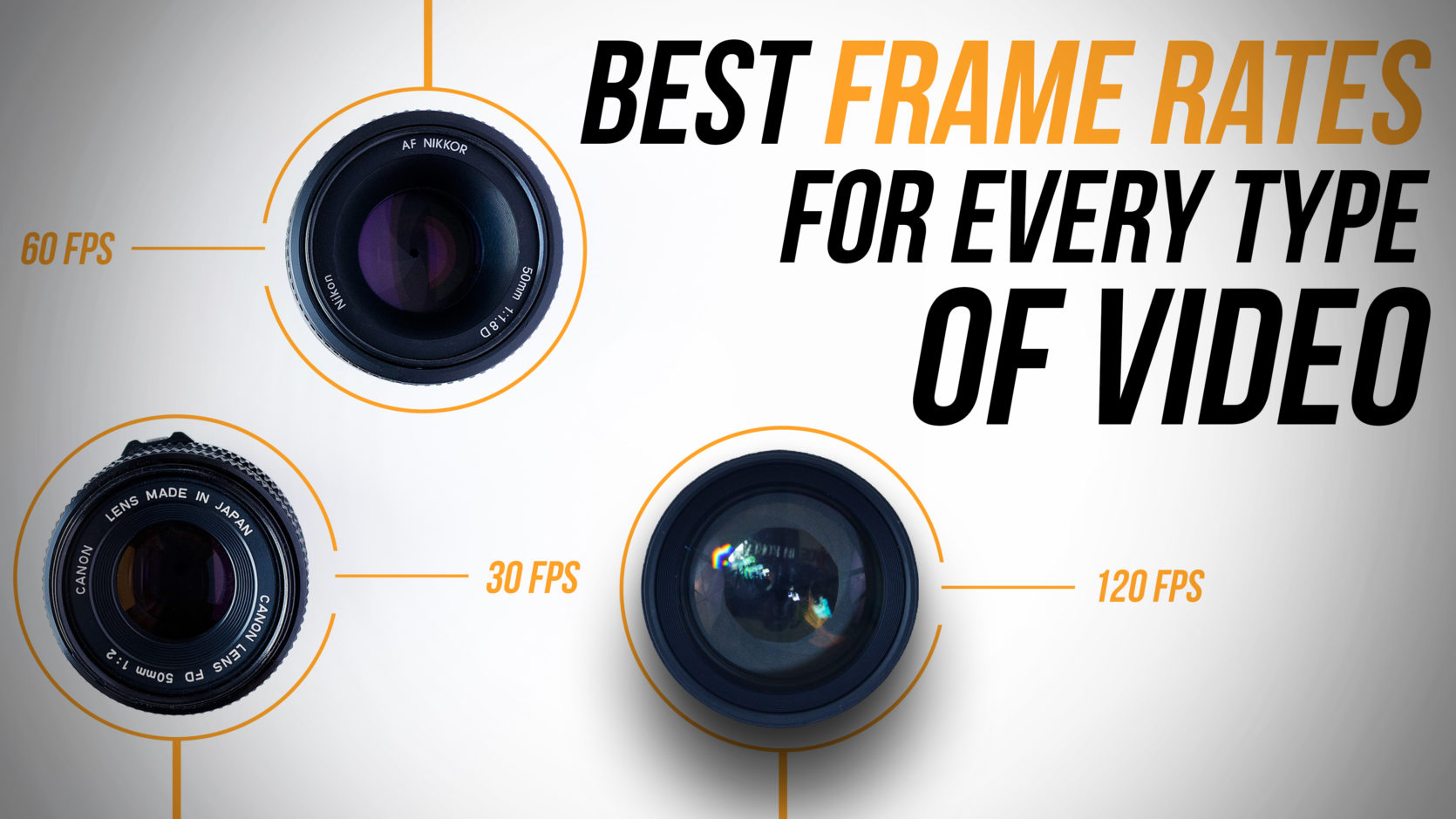
The Best Frame Rates for Every Type of Video
There’s something deeply captivating about a romance scene that slows to the point in which each second can literally be felt by the audience. Or an action scene that speeds by so fast you feel almost as if you just sped past the scene with the actors on the set. Understanding and controlling the frame rates for your video will allow you to use the frame rate to speed up, or slow down your video to create dramatic effects that are equally interesting and amazing. Follow along as we guide you through understanding the best frame rates for every type of video production.

What are Frame Rates?
The frame rate refers to the total number of frames per second at which a video is played. The frames per second or fps refers to the number of individual still photos or frames that are captured during the recording and later projected in the video.
Standard video frame rates use 24fps recording or 24 frames per second. This means that for each second of film there are a total of 24 frames captured and delivered in the recording. To capture a 24fps film you must have the shutter speed set to 1/50th of a second.
For television, the standard frame rate is 30fps. Therefore, there are 30 total frames captured per second for television programming. To capture 30fps footage, your shutter speed should be set to 1/60th of a second.

Frame Rates for Each Type of Video
The video frame rate that you shoot at is determined based on the desired effect you wish to achieve with your video.
Below is a look at the frame rates that are generally used for each type of video:
- Silent Era Movies – a frame rate of 1-16fps can be used to create the look of old, silent era movies. Movies filmed at a lower frame rate like this will appear chopped and not very smooth.
- Cinematic Movies – a frame rate of 24fps produces a basic smoothness, not perfectly smooth, but sufficient for a cinematic look. This is the standard cinematic frame rate.
- TV Broadcasts & Sporting Events – a frame rate of 30fps is ideal for live television broadcasts and live sporting events.
- Basic Actions such as Walking – a frame rate of 60fps is the ideal rate to capture basic actions such as people walking or the candles being blown on a cake.
- Slowing Actions Such as Running – a frame rate of 120fps can be used to capture faster actions which are best slowed down for viewing such as people or animals running.
- Slowing Rapid Actions such as a Balloon Bursting – a frame rate of 240fps can be used to capture rapid actions that must be slowed drastically in order for the full effect to be seen such as a balloon bursting or water splashing upon a swimmer hitting the pool.
- Fast Moving Objects such as Ski Tricks – a frame rate of 480fps can be used to capture fast moving objects such as a skier skiing or a skateboarder performing a trick or a surfer catching a wave.
- Extremely Slowed Motion – frame rates of 960fps or more can be used to film hyper-slowed motion such as the after effects of an explosion.
Capturing Fast Motion Video
Just as you can use frame rates to capture slow motion as listed above, the frame rates can also be used to produce fast motion video which produces the instant gratification that we are all so accustomed to in today’s world.
To speed your video up, consider capturing the footage at an increased movie frame rate as you generally do not want to capture fewer frames per second than the standard set by your medium.
Therefore, if you wish to produce a sped-up version of a clip that is for the movies, you would start with footage at least 24fps such as movie frame rate and then capture footage of a higher fps such as 60fps to work with allowing you to blaze through shots in editing.

In the end, the best frame rates for every type of video you choose will depend on the intended final medium in which the video will be shown as well as the type of shot or action that is captured and the intended final use of the footage.
Knowing as much as you can about the desired outcome of the footage before filming can help you in choosing the ideal frame rate for your video.


